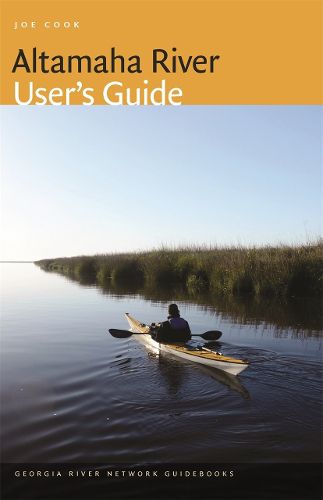Readings Newsletter
Become a Readings Member to make your shopping experience even easier.
Sign in or sign up for free!
You’re not far away from qualifying for FREE standard shipping within Australia
You’ve qualified for FREE standard shipping within Australia
The cart is loading…






In the Altamaha River User's Guide, both novice and experienced water sports enthusiasts will find all the information required to enjoy the full length of the 137-mile river formed at the confluence of the Oconee and Ocmulgee Rivers east of Lumber City, Georgia, as well as its major tributary, the Ohoopee, which winds some 120 miles through south-central Georgia.
The drainage basin of the largest river in Georgia is about 14,000 square miles in size, qualifying it among the larger river basins of the U.S. Atlantic coast. At least 120 species of rare or endangered plants and animals live in the Altamaha River watershed, including 18 species of freshwater mussels, 7 of which are endemic to the Altamaha. The river basin is also home to federally protected Atlantic and shortnose sturgeons and supports the only known example of old-growth longleaf pine and black oak forest in the United States. The unusual Franklin tree (Franklinia altamaha), now extinct in the wild, was found by British naturalist John Bartram along the Altamaha in 1765. Because of its rich biodiversity, the Altamaha is often referred to as Georgia's Little Amazon.
The river passes through sparsely populated land, with Brunswick, Savannah, and Jesup being the largest nearby cities, yet owing to its importance in the history of Georgia-from the first settlements at Darien through the steamboat era of the late 1800s and early 1900s-the river holds a special place in the state's cultural history. Indeed, its headwater streams stretch all the way to metro Atlanta and Athens.
In tandem with the already published Oconee and Ocmulgee River User's Guides, the publication of the Altamaha River User's Guide completes UGA Press's documentation of Georgia's largest river system. Author Joe Cook includes detailed maps, put-in and takeout suggestions, fishing and camping locations, mile-by-mile points of interest, and an illustrated guide to the animals and plants commonly seen in and around the river. Day-trippers will enjoy the guide's fascinating description of the cultural and natural heritage of this richly diverse waterway.
FEATURES:
an introduction and overview of the river chapters describing each river section, with detailed maps and notes on river access and points of interest a compact natural history guide featuring species of interest notes on safety and boating etiquette a fishing primer notes on organizations working to protect the river
$9.00 standard shipping within Australia
FREE standard shipping within Australia for orders over $100.00
Express & International shipping calculated at checkout
In the Altamaha River User's Guide, both novice and experienced water sports enthusiasts will find all the information required to enjoy the full length of the 137-mile river formed at the confluence of the Oconee and Ocmulgee Rivers east of Lumber City, Georgia, as well as its major tributary, the Ohoopee, which winds some 120 miles through south-central Georgia.
The drainage basin of the largest river in Georgia is about 14,000 square miles in size, qualifying it among the larger river basins of the U.S. Atlantic coast. At least 120 species of rare or endangered plants and animals live in the Altamaha River watershed, including 18 species of freshwater mussels, 7 of which are endemic to the Altamaha. The river basin is also home to federally protected Atlantic and shortnose sturgeons and supports the only known example of old-growth longleaf pine and black oak forest in the United States. The unusual Franklin tree (Franklinia altamaha), now extinct in the wild, was found by British naturalist John Bartram along the Altamaha in 1765. Because of its rich biodiversity, the Altamaha is often referred to as Georgia's Little Amazon.
The river passes through sparsely populated land, with Brunswick, Savannah, and Jesup being the largest nearby cities, yet owing to its importance in the history of Georgia-from the first settlements at Darien through the steamboat era of the late 1800s and early 1900s-the river holds a special place in the state's cultural history. Indeed, its headwater streams stretch all the way to metro Atlanta and Athens.
In tandem with the already published Oconee and Ocmulgee River User's Guides, the publication of the Altamaha River User's Guide completes UGA Press's documentation of Georgia's largest river system. Author Joe Cook includes detailed maps, put-in and takeout suggestions, fishing and camping locations, mile-by-mile points of interest, and an illustrated guide to the animals and plants commonly seen in and around the river. Day-trippers will enjoy the guide's fascinating description of the cultural and natural heritage of this richly diverse waterway.
FEATURES:
an introduction and overview of the river chapters describing each river section, with detailed maps and notes on river access and points of interest a compact natural history guide featuring species of interest notes on safety and boating etiquette a fishing primer notes on organizations working to protect the river